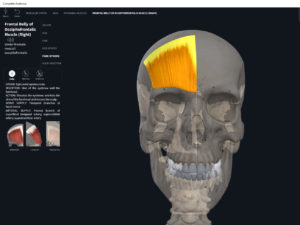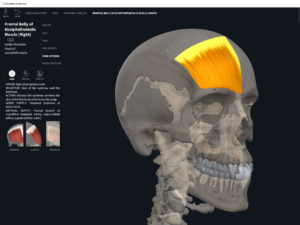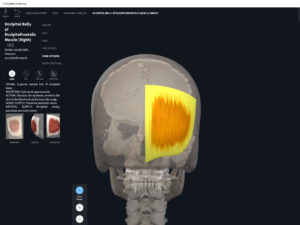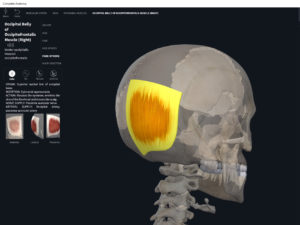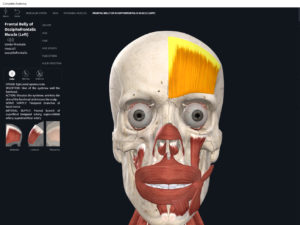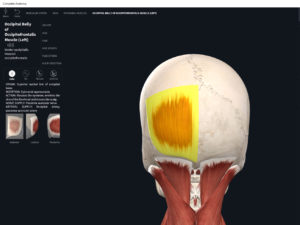Anatomy & Physiology: Muscles—Occipitofrontalis.
Structure.
- Origin: frontal belly—epicranial aponeurosis; occipital belly—occipital bone and mastoid process of temporal bone.
- Insertion: frontal belly—skin superior to supraorbital margin; occipital belly—epicranial aponeurosis.
Function.
- Concentric action: frontal belly—raises eyebrows, draw scalp anteriorly, wrinkles skin of forehead horizontally (surprised look); occipital belly—draws scalp posteriorly.
- Reverse mover action:
- Eccentric action:
- Isometric action:
- Innervation: facial VII nerve.
- Arterial supply: occipitalis–occipital and posterior auricular arteries; frontalis-supraorbital and supratrochlear branches of ophthalmic artery.
Clinical Significance.
More.
- https://www.anatomynext.com/occipitofrontalis/
- http://anatomyzone.com/tutorials/musculoskeletal/muscles-of-facial-expression/
References
Biel, A. (2015). Trail guide to the body: A hands-on guide to locating muscles, bones and more.
Cedars-Sinai. (2018). Vertebrae of the spine. Retrieved from https://www.cedars-sinai.org/health-library/diseases-and-conditions/v/vertebrae-of-the-spine.html
Clark, M., Lucett, S., Sutton, B. G., & National Academy of Sports Medicine. (2014). NASM essentials of corrective exercise training. Burlington, MA: Jones & Bartlett Learning.
Jenkins, G., & Tortora, G. J. (2012). Anatomy and Physiology: From Science to Life, 3rd Edition International Stu. John Wiley & Sons.
Muscolino, J. E. (2017). The muscular system manual: The skeletal muscles of the human body.
